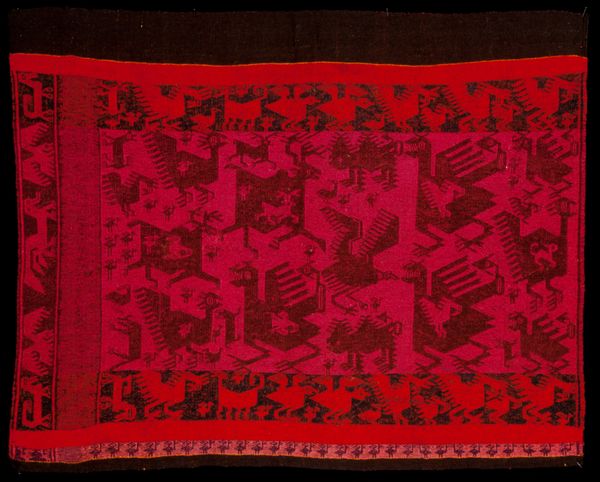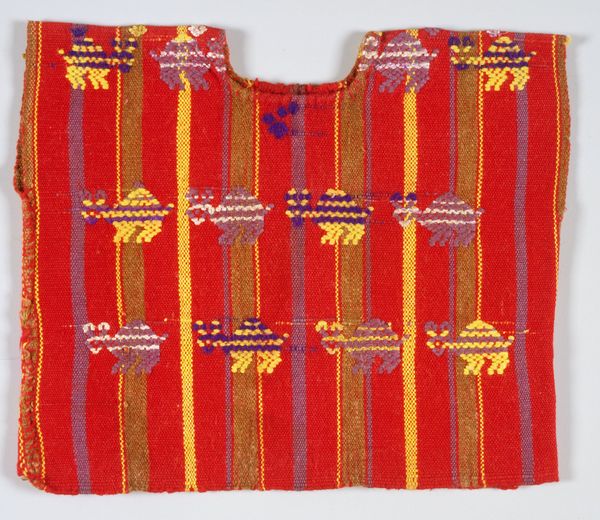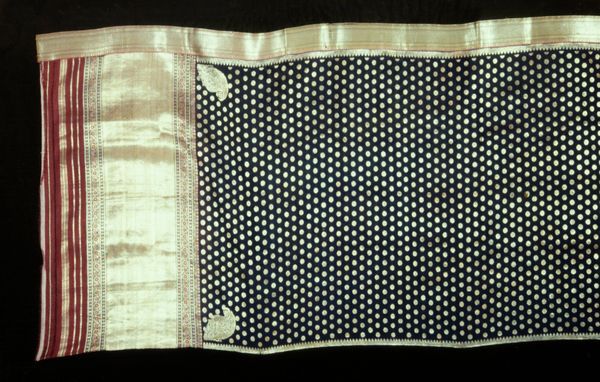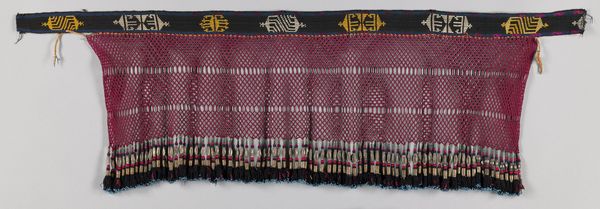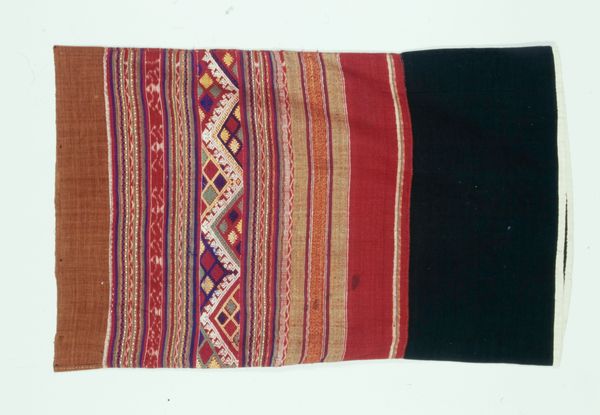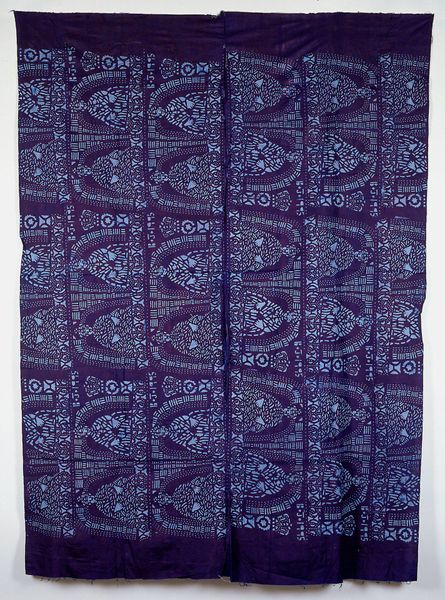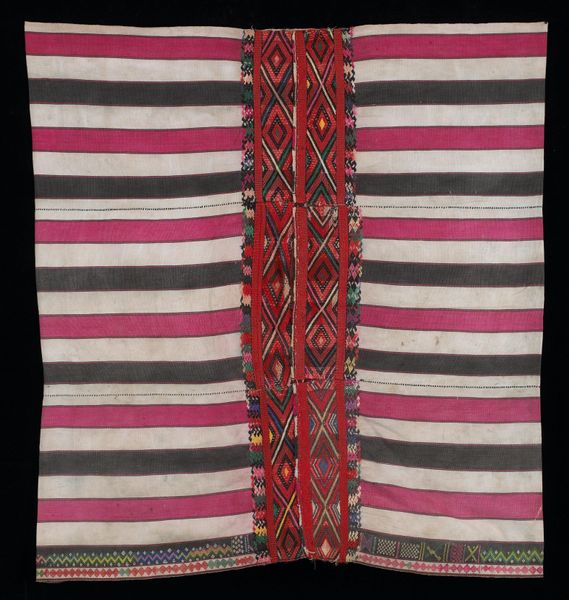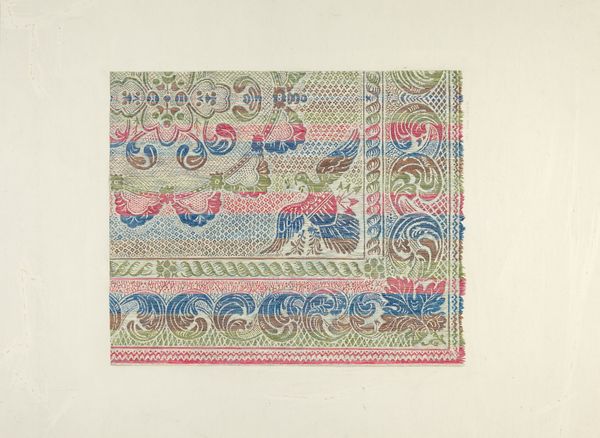
weaving, textile, cotton
#
textile
#
weaving
#
textile
#
geometric
#
cotton
#
yoruba-art
#
decorative-art
Dimensions: 72 3/4 × 45 3/8 in. (184.79 × 115.25 cm)
Copyright: No Known Copyright
Editor: Here we have a Woman’s Wrapper, made in the 20th century, from the Yoruba people. It's made of woven cotton, and the geometric patterns give it a kind of rhythmic visual texture. What stands out to you about it? Curator: I'm immediately drawn to the materiality. The cotton itself speaks volumes. Consider the labor involved in cultivating it, spinning it, dyeing it, and then painstakingly weaving it into this complex pattern. We often separate "art" from "craft," but this wrapper collapses that distinction. Editor: Right, it’s clearly functional, but the design is so deliberate and artful. Curator: Exactly. Look at the repeated motifs. They are not merely decorative. They may carry symbolic weight related to social status, lineage, or religious beliefs. Think about the women who wore this; how would the garment be perceived? How did they negotiate labor within this economy? This piece opens a window onto Yoruba textile production and consumption within broader systems of exchange. The pattern & decoration element elevates what might otherwise be considered domestic craft into high art, through its emphasis on meticulous repetition and visual impact. Editor: It's fascinating to think about how something so practical could be so embedded in culture and even politics. Were there specialized workshops for weaving these? Curator: Probably, yes. We would need to examine other wrappers and study historical records. How was the production structured? How did this production reflect or reinforce social hierarchies? Consider also, the choice of materials. Cotton suggests certain trade routes and economic connections. The dye source and how that impacted those processes too, matter in equal parts here. Editor: I never thought about textiles this way before, it's like reading a whole history through cloth. Thanks! Curator: My pleasure! By interrogating its materials and making, we reveal hidden aspects of Yoruba society and its participation in global economies of cloth.
Comments
No comments
Be the first to comment and join the conversation on the ultimate creative platform.
